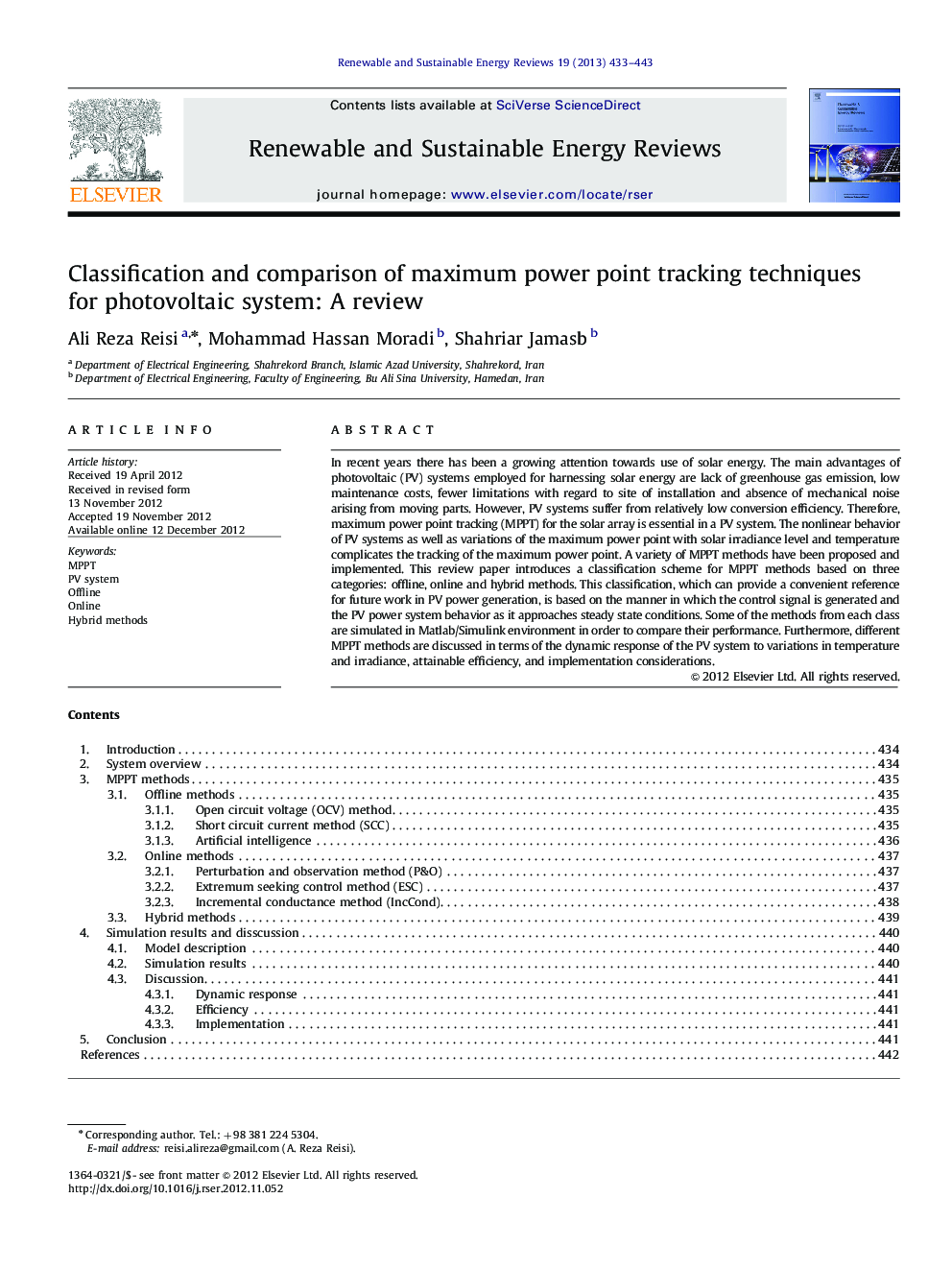| Article ID | Journal | Published Year | Pages | File Type |
|---|---|---|---|---|
| 1750525 | Renewable and Sustainable Energy Reviews | 2013 | 11 Pages |
In recent years there has been a growing attention towards use of solar energy. The main advantages of photovoltaic (PV) systems employed for harnessing solar energy are lack of greenhouse gas emission, low maintenance costs, fewer limitations with regard to site of installation and absence of mechanical noise arising from moving parts. However, PV systems suffer from relatively low conversion efficiency. Therefore, maximum power point tracking (MPPT) for the solar array is essential in a PV system. The nonlinear behavior of PV systems as well as variations of the maximum power point with solar irradiance level and temperature complicates the tracking of the maximum power point. A variety of MPPT methods have been proposed and implemented. This review paper introduces a classification scheme for MPPT methods based on three categories: offline, online and hybrid methods. This classification, which can provide a convenient reference for future work in PV power generation, is based on the manner in which the control signal is generated and the PV power system behavior as it approaches steady state conditions. Some of the methods from each class are simulated in Matlab/Simulink environment in order to compare their performance. Furthermore, different MPPT methods are discussed in terms of the dynamic response of the PV system to variations in temperature and irradiance, attainable efficiency, and implementation considerations.
